Physical Address
304 North Cardinal St.
Dorchester Center, MA 02124
Basal layer is destroyed
Civatte bodies
Sawtooth rete pattern
Lichen planus
Benign lichenoid keratosis (BLK, lichen planus–like keratosis)
Lichenoid drug eruption
Lichenoid graft-versus-host disease (GvHD)
Hypertrophic lupus erythematosus
Lichenoid regression of a melanocytic lesion (usually lentigo maligna)
The biopsy in each of these conditions demonstrates a sawtooth rete ridge pattern with destruction of the basal layer, a bandlike lymphoid infiltrate, and presence of Civatte bodies. Compact hyperkeratosis and beaded hypergranulosis are typically present. The cells of the stratum spinosum are enlarged and more eosinophilic than the normal epidermis. Vacuoles may be present in the lowest cells of stratum spinosum, but the basal layer is gone. An underlying bandlike lymphoid infiltrate is common.
If neither parakeratosis nor eosinophils is noted, the changes are consistent with lichen planus. Lichenoid interface dermatitis with neither eosinophils nor parakeratosis may also be seen in BLK (lichen planus–like keratosis), lichenoid drug eruption, lichenoid GvHD, hypertrophic lupus erythematosus, and lichenoid regression of lentigo maligna. Clinical correlation is essential. Direct immunofluorescence (DIF) will distinguish hypertrophic lupus erythematosus (continuous granular band of immunoglobulins and complement plus cytoid bodies) from lichen planus (shaggy fibrin, cytoid bodies).
When parakeratosis is present, lichen planus is very unlikely. The differential diagnosis still includes BLK, lichenoid drug eruption, lichenoid GvHD, and lichenoid regression of a melanocytic lesion. Hypertrophic lupus erythematosus rarely demonstrates parakeratosis.
The presence of eosinophils strongly favors a diagnosis of lichenoid drug eruption. The presence of eosinophils weighs strongly against a diagnosis of lichen planus. They are rarely seen in hypertrophic lupus erythematosus, BLK, lichenoid GvHD, or lichenoid regression of a melanocytic lesion.
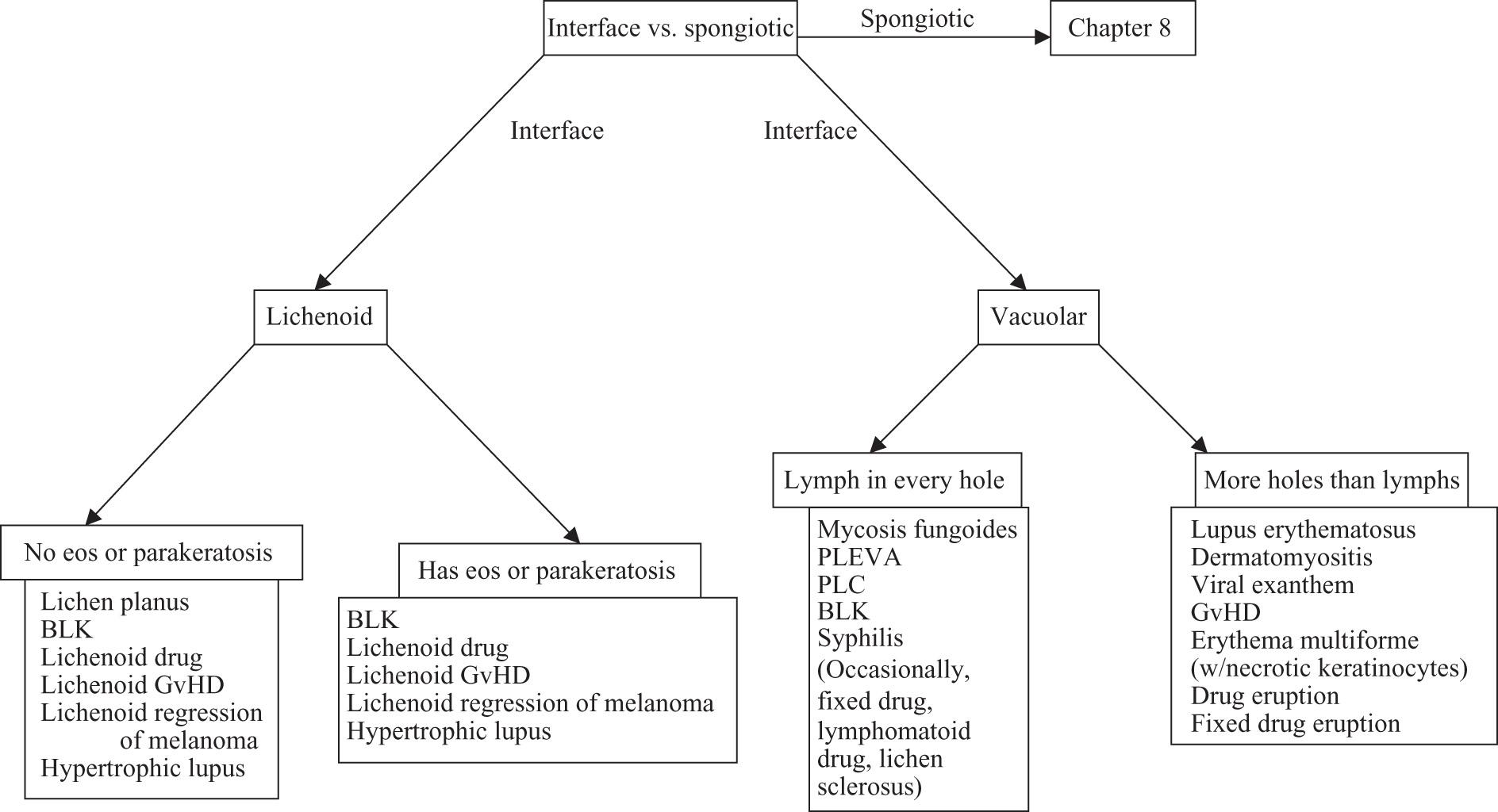
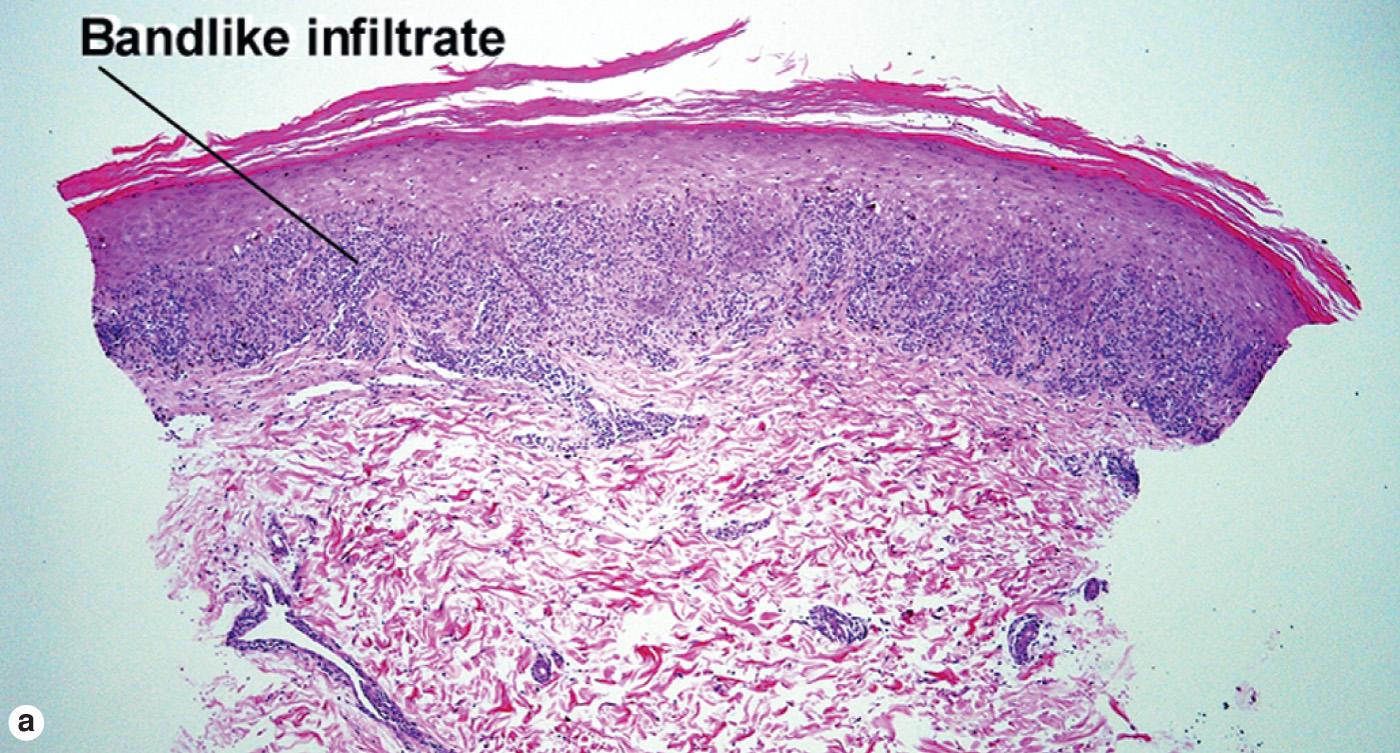
An analogy that those with teenagers may appreciate:
Lichen planus is like a strict parent: “You will not hang around with eosinophils or parakeratosis.”
Lichenoid drug eruption and the remaining lichenoid processes are more permissive: “You don't need to have eosinophils or parakeratosis, but if you want to, it's OK.”
Effacement of the rete pattern
Melanin pigment incontinence (melanoderma)
Civatte bodies
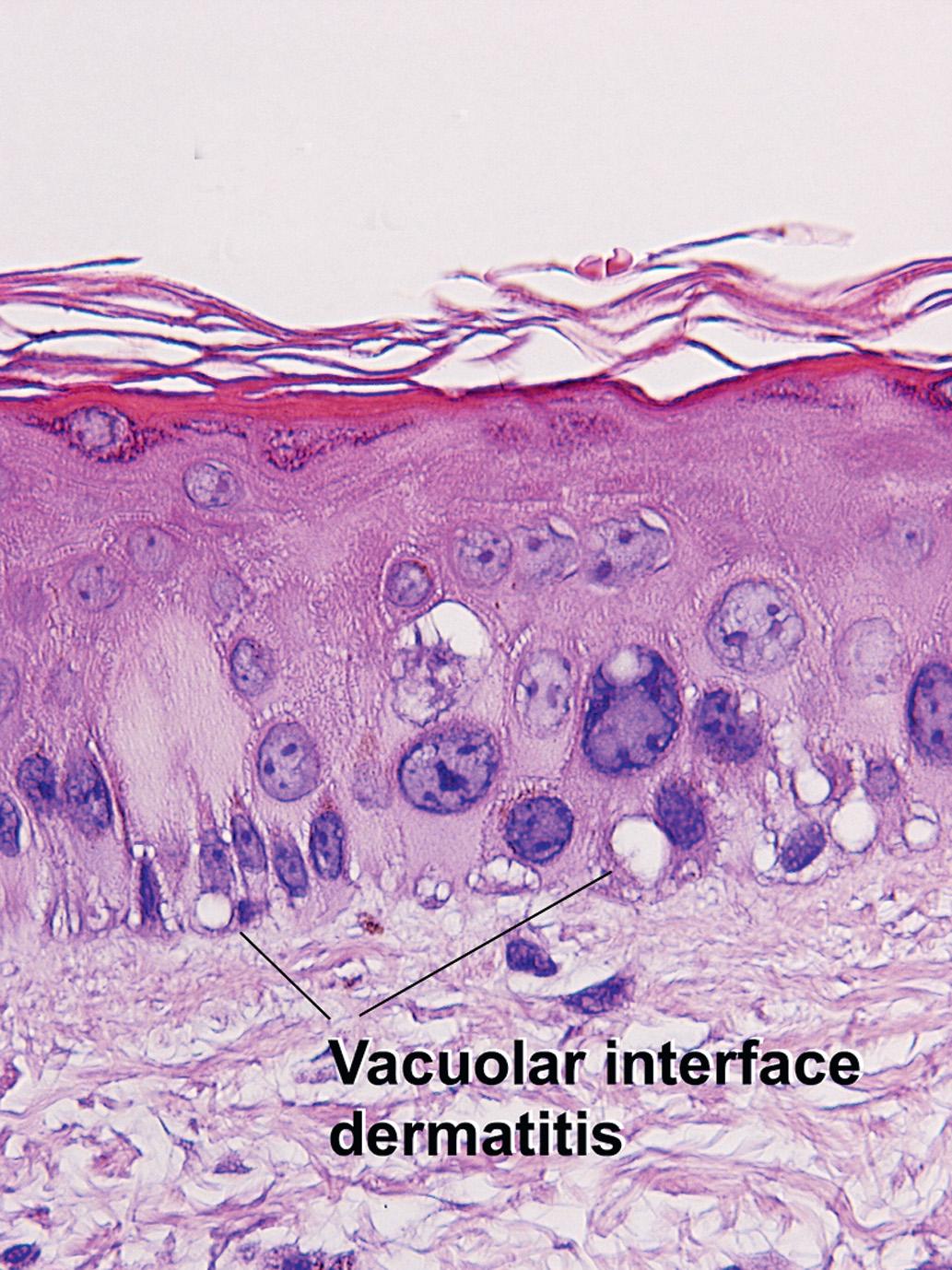
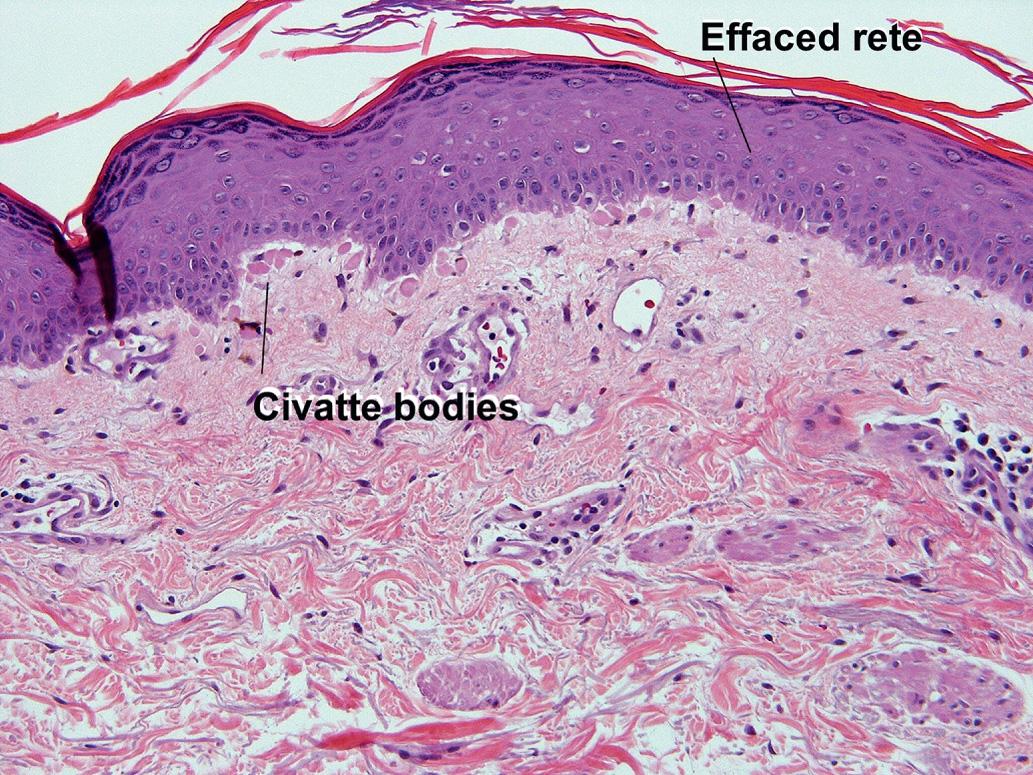
Lichenoid interface dermatitis
No parakeratosis or eosinophils
Sawtooth rete ridges
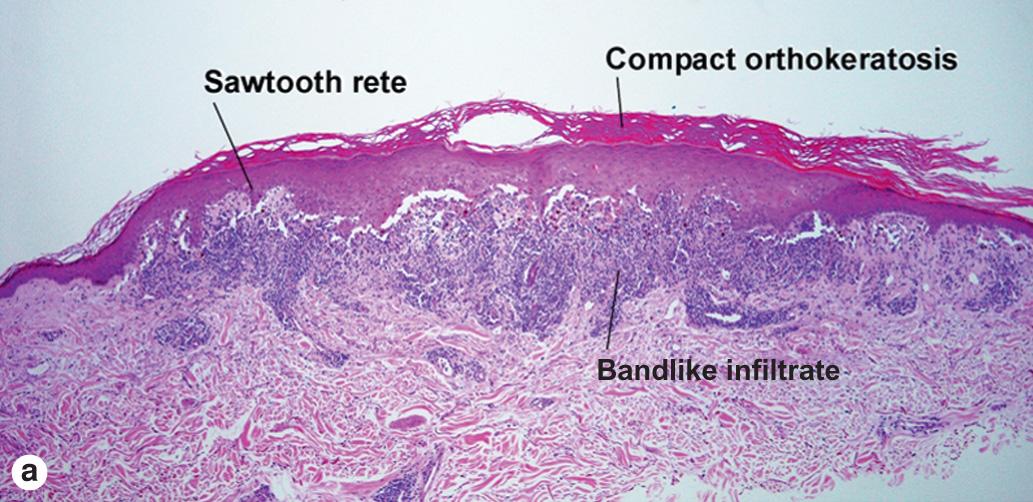
Lichenoid interface dermatitis
Typically has eosinophils
Often has parakeratosis
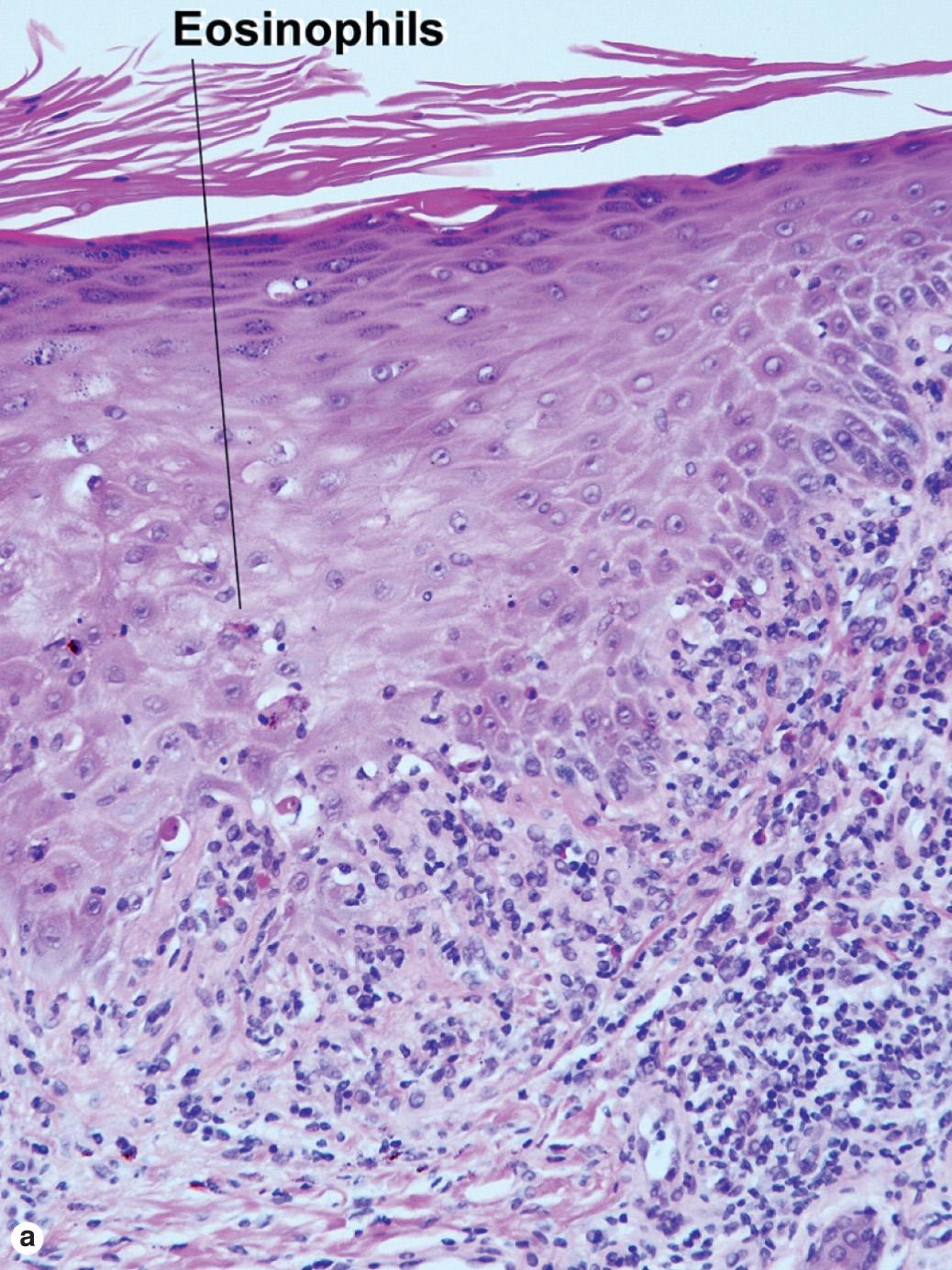
Lichenoid interface dermatitis
May have parakeratosis
Stratum corneum not homogeneous
Rarely has eosinophils
Solar lentigo commonly present at the margin
BLK usually presents as a solitary pearly pink macule on the trunk or an extremity. The biopsy is usually performed to rule out basal cell carcinoma. Most lesions represent lichenoid regression of benign solar lentigines. The earliest stage of evolution may show vacuolar interface dermatitis with a lymphocyte in every vacuole.
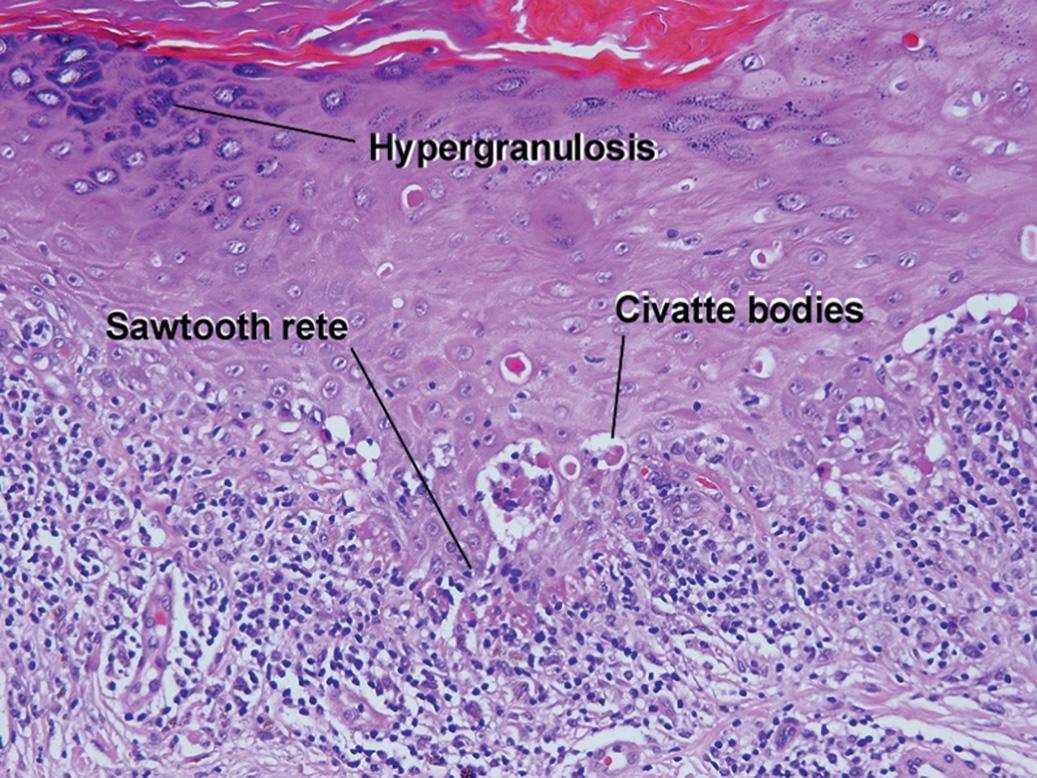
Lichenoid interface dermatitis
May have parakeratosis
Rarely has eosinophils
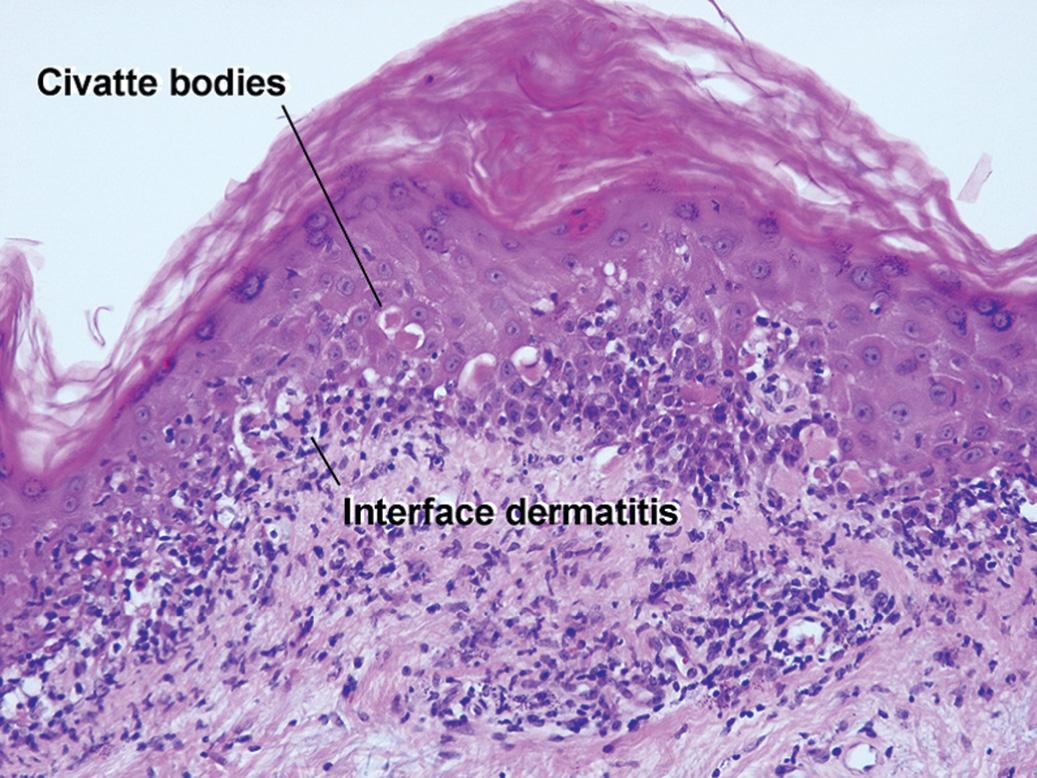
Lichenoid interface dermatitis
Rarely has parakeratosis
Rarely has eosinophils
DIF: continuous granular band of immunoglobulin (Ig) G/A/M and C3 (full house) at the basement membrane zone (BMZ)
Superficial and deep infiltrate
Follicular plugging
Many CD123+ plasmacytoid dendritic cells adjacent to epithelium (helps differentiate from squamous cell carcinoma in situ)
Hypertrophic lupus erythematosus is lichenoid histologically. It is distinguished from lichen planus by the DIF pattern, by the occasional presence of BMZ thickening or dermal mucin, and by clinical history and serologic findings. This is the form of chronic cutaneous lupus erythematosus that is most likely to give rise to invasive squamous cell carcinoma.
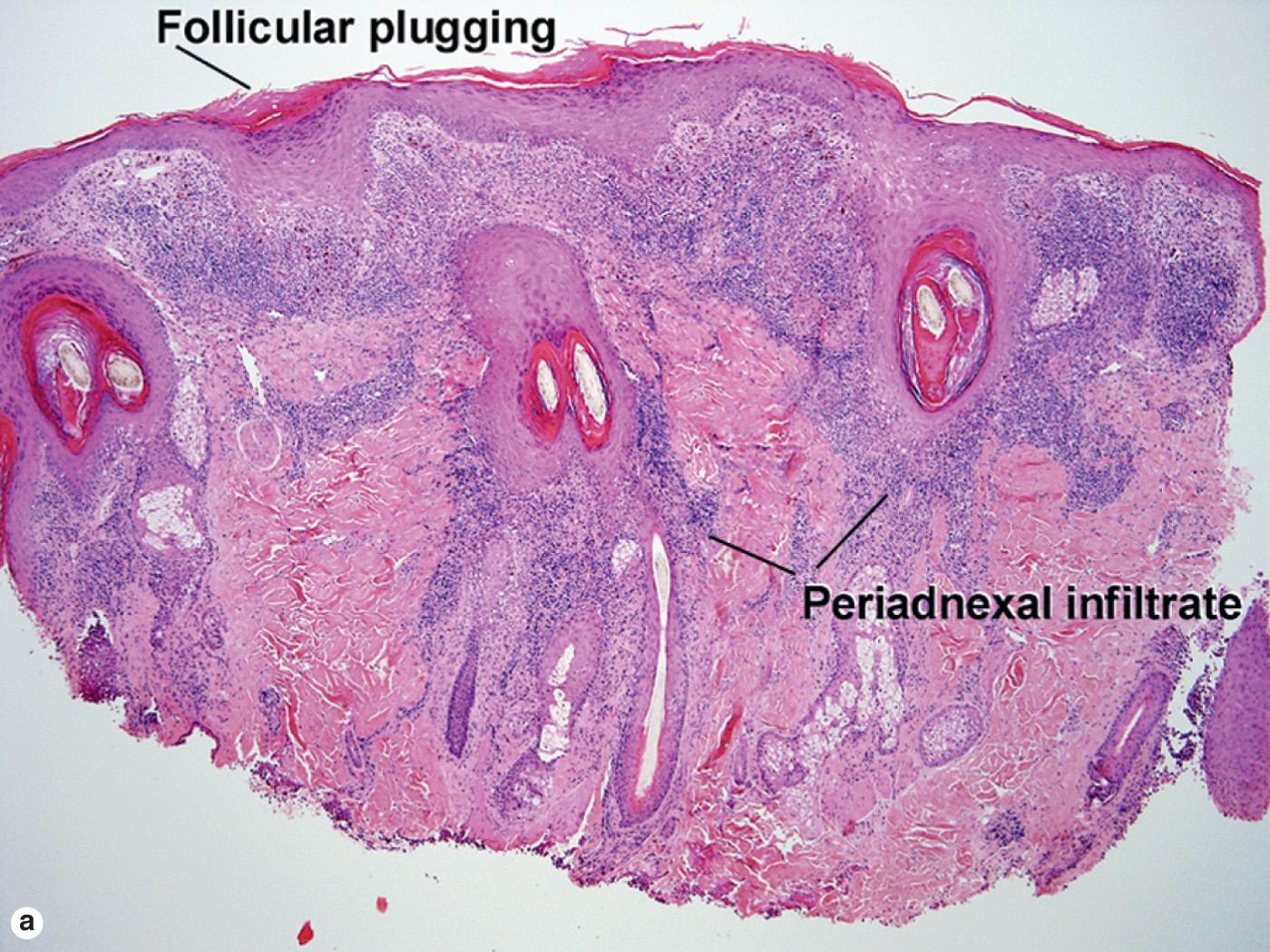
Lichenoid interface dermatitis
Heavily sun-damaged skin
Adjacent rete pattern may be effaced
May have parakeratosis
Rarely has eosinophils
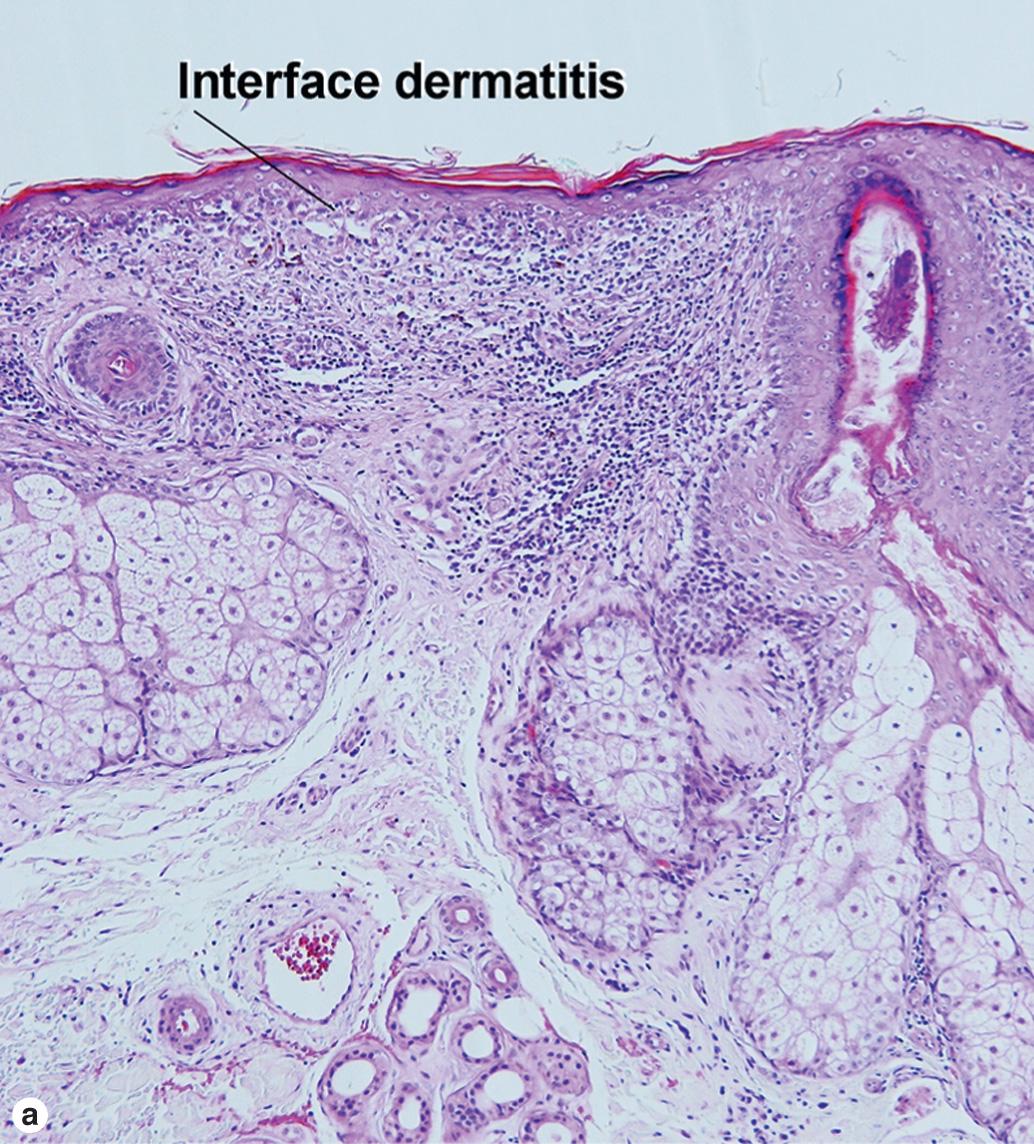
Become a Clinical Tree membership for Full access and enjoy Unlimited articles
If you are a member. Log in here